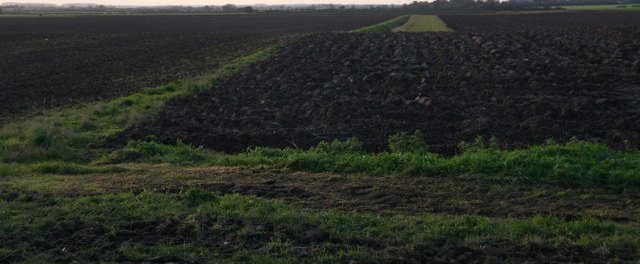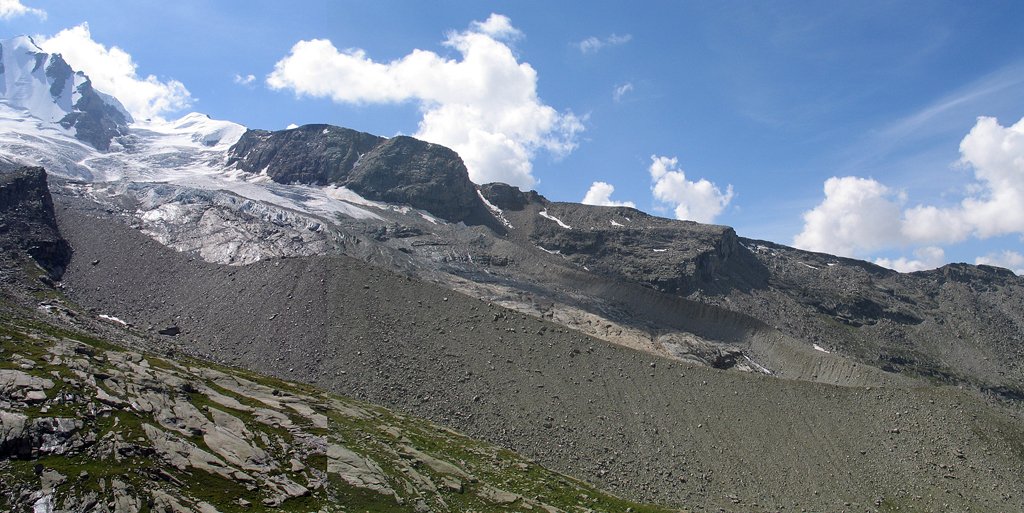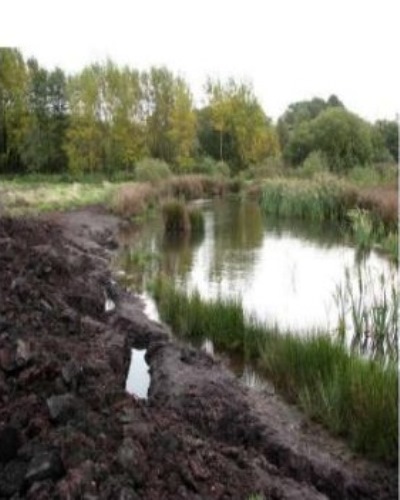The topic ‘Soil’ is important for IAS Exam – Geography subject that comes under Mains GS-I. This article will brief you about soil, the different types of soils in India and their characteristics, soil erosion and the importance and ways of soil conservation.
Classification of Soil in India (UPSC Notes)
Download PDF Here
What is Soil?
The loose material or the upper layer of the mantle rock (regolith – a layer of loose, heterogeneous material covering solid rock) consisting mainly of very small particles and humus which can support the growth of plants is known as “soil”. Soil mainly consists of mineral/rock particles, portions of decayed organic matter, soil water, soil air and living organisms. The major factors that influence the formation of soil are parent material, relief, climate, vegetation, life forms and time.
In general, soil is composed of four elements:
- Inorganic or mineral fractions derived from the parent material
- Organic matter (decayed and decomposed plants and animals)
- Air
- Water
Soil is formed under specific natural conditions and each of the elements of the natural environment contributes to this complex process of soil formation known as “pedogenesis”.
Soil Profile
The soil profile is a vertical cross-section of the soil, made of layers parallel to the surface. Each layer of soil has a different texture and is known as the horizon.
- Horizon A (Topsoil) – It is the topmost layer where the organic materials have got incorporated with the mineral matter, nutrients and water – elements necessary for the growth of plants.
- Horizon B (Subsoil) – This zone has a greater content of minerals and humus is present in smaller quantities. It represents a transition between Horizon A and Horizon C and contains matter derived from below as well as above.
- Horizon C (weathered and decomposed rock) – This zone is composed of the loose parent/rock material. This layer is the first stage in the soil formation process and eventually forms the above two layers.
Underneath these three horizons is the rock which is known as the parent rock or the bedrock.

Different Types of Soil in India
In the ancient period, soils were mainly classified into two – Urvara (fertile) and Usara (sterile).
The first scientific classification of soil was done by Vasily Dokuchaev. In India, the Indian Council of Agricultural Research (ICAR) has classified soils into 8 categories. The types of soil in India according to this are:
- Alluvial Soil
- Black Cotton Soil
- Red & Yellow Soil
- Laterite Soil
- Mountainous or Forest Soil
- Arid or Desert Soil
- Saline and Alkaline Soil
- Peaty and Marshy Soil
As mentioned before, there are eight types of soils categorized by ICAR but some Indian Soils like – Karewa soil, Sub-Montane Soil, Snowfield, Grey/Brown Soil are all sub-types of main Indian Soil. Let’s read about them one by one:
Types of Soil in India – Alluvial Soil
- Alluvial soils are widespread in the northern plains and river valleys.
- It covers about 40% of the total land area of the country.
- These soils are mainly derived from the debris brought down from the Himalayas.
- In the Peninsular region, they are found in deltas of the east coast and in the river valleys.
- The colour of the alluvial soil varies from light grey to ash grey.
- The alluvial soil varies in nature from sandy loam to clay.
- They are rich in potash but poor in phosphorus.
- Two different types of alluvial soils have developed in the Upper and Middle Ganga plains – Khadar and Bhangar.
- Khadar is the new alluvium and occupies the flood plains of the rivers. Khadar is enriched with fresh silt deposits every year.
- Bhangar is the old alluvium, deposited away from the flood plains.
- Both Khadar and Bhangar soils contain concretion (kankars) of impure calcium carbonate.
- These soils are more loamy and clayey in the lower and middle Ganga plains and the Brahmaputra valley.
- Alluvial soils are intensely cultivated – wheat, maize, sugarcane, pulses, oilseed, etc. are mainly cultivated.
Types of Soil in India – Red & Yellow Soil

- Also known as the “omnibus group”.
- It covers about 18.5 % of the total land area of the country.
- It is found in regions of low rainfall (eastern and southern parts of the Deccan Plateau). Along the piedmont zone of the Western Ghats, a long stretch of area is occupied by red loamy soil. This soil is also present in parts of Odisha and Chattisgarh and in the southern parts of the Middle Ganga Plain.
- The red colour is due to the presence of iron in crystalline and metamorphic rocks. The soil appears yellow when it is in hydrated form.
- The fine-grained red and yellow soil is usually fertile while the coarse-grained soil is less fertile.
- This type of soil is generally deficient in nitrogen, phosphorus and humus.
- Wheat, cotton, oilseeds, millets, tobacco, and pulses are mainly cultivated in red and yellow soil.
Types of Soil in India – Black or Regur Soil

- Black soil is also known as “Regur Soil” or the “Black Cotton Soil”.
- It covers about 15% of the total land area of the country.
- It covers most of the Deccan Plateau – parts of Maharashtra, Madhya Pradesh, Gujarat, Andhra Pradesh and some parts of Tamil Nadu. In the upper reaches of the Godavari and Krishna, and the north-western part of the Deccan Plateau, the black soil is very deep.
- The colour of these soils varies from deep black to grey.
- The black soils are generally clayey, deep and impermeable. They swell greatly and become sticky when wet in the rainy season. In the dry season, the moisture evaporates, the soil shrinks and develops wide cracks.
- Black soils are rich in iron, lime, aluminium, magnesium and also contain potassium. However, these soils are deficient in nitrogen, phosphorus and organic matter.
- Cotton, pulses, millets, castor, tobacco, sugarcane, citrus fruits, linseed, etc. are mainly cultivated in black soil.
Types of Soil in India – Desert Soil

- Also known as arid soil, it accounts for over 4.42 % of the total land area of the country.
- The colour ranges from red to brown.
- Desert soils are sandy to gravelly in texture, have low moisture content and low water-retaining capacity.
- These soils are saline in nature and in certain regions, the salt content is so high that common salt is obtained by evaporating water.
- These soils have normal phosphate content but are deficient in nitrogen.
- Due to increased calcium content in the lower horizons of the soil, there is the formation of ‘kankar’ layers. These kankar layers restrict the penetration of water and as such when water is made available through irrigation, the soil moisture is readily available for sustainable plant growth.
- Desert soils are profoundly found in western Rajasthan and contain little humus and organic matter.
Types of Soil in India – Laterite Soil

- The name has been derived from the Latin word “later” which means brick.
- It accounts for about 3.7% of the total area of the country.
- These are typical soils of the monsoon climate which is characterised by seasonal rainfall. With rain, lime and silica are leached away, and soil rich in iron oxide and aluminium are left leading to the formation of laterite soil.
- Laterite soil is deficient in organic matter, nitrogen, phosphate and calcium, however, iron oxide and potash are in abundance.
- Although low in fertility, they respond well to manures and fertilisers.
- Laterite soils are found in Karnataka, Tamil Nadu, Kerala, Madhya Pradesh and hilly regions of Assam and Odisha.
- Red laterite soil in Kerala, Tamil Nadu and Andhra Pradesh are well suited for tree crop cultivation like cashew nuts.
- Laterite soil hardens rapidly and irreversibly on exposure to the air, a property that leads to its use as building bricks in southern India.
Types of Soil in India – Mountain Soil

- This type of soil is found in forest regions where rainfall is sufficient.
- The texture of the soil depends on the mountain environment where they are found.
- These soils are coarse-grained in the upper slopes and loamy and silty on valley sides.
- In the snowbound areas of the Himalayas, these soils undergo denudation and are acidic with low humus content. The soils found in the lower valleys are fertile.
- Also called forest soil.
Types of Soil in India – Peaty and Marshy Soils

- These soils are found in regions of heavy rainfall and high humidity, and it supports the good growth of vegetation.
- Peaty soils are rich in humus and organic matter.
- These soils are generally heavy and black in colour. In many places, these soils are alkaline.
- These are found in southern Uttarakhand, the northern part of Bihar, and the coastal areas of West Bengal, Odisha and Tamil Nadu.
Types of Soil in India – Saline and Alkaline Soils

- These soils have high percentages of sodium, magnesium and potassium, and hence are infertile. The high salt content is mainly because of the dry climate and poor drainage.
- The texture ranges from sandy to loamy.
- These soils are found in arid and semi-arid areas, and in waterlogged and swampy regions.
- These soils are deficient in calcium and nitrogen.
- These soils are mostly found in western Gujarat, deltas of the eastern coast and in Sundarban areas of West Bengal. In the Rann of Kutch, the south-western monsoon brings salt particles and deposits there as a crust. Seawater near deltas also increases the salinity of the soil.
- These soils can be reclaimed by improving drainage, by applying gypsum or lime and by cultivating salt-resistant crops like berseem, dhaincha, etc.
- These are also called Reh, Usar, Kallar, Rakar, Thur, and Chopan. These are mainly found in Rajasthan, Haryana, Punjab, Uttar Pradesh, Bihar, and Maharashtra. Sodium chloride and sodium sulphate are present in this soil. It is suitable for leguminous crops.
Types of Soil in India – Red and Black Soil
These are developed over the granite, gneiss, and quartzite of the Precambrian and Archean eras. This soil performs well if irrigated. Generally, this soil has very little productivity.
Types of Soil in India – Grey and Brown Soil
These soils are found in Rajasthan and Gujarat. It is formed by the weathering of granite, quartzite and gneiss. These loose, friable soils contain iron oxide (haematite and limonite).
Types of Soil in India – Submontane Soil
These are formed by the deposition of eroded material from Shiwaliks and the lesser Himalayas. These are found in the Tarai region of the submontane stretching from Jammu and Kashmir to Assam. The soil supports a luxuriant growth of forest and is more prone to soil erosion.
Types of Soil in India – Snowfields
This soil was found under the snow and glaciers at the highest peak of the greater Himalayas, Karakoram, Ladakh, and Zaskar. This soil is immature and unsuitable for crops.
Types of Soil in India – Karewa Soil
Karewa soils are the lacustrine deposits in the Kashmir Valley and the Bhadarwah Valley. Fine silt, clay, and boulder gravels are the composition of Karewa soil. They are characterized by fossils. These soils are mainly devoted to the cultivation of saffron, almonds, apple, walnut, etc.
Classification of Indian Soil as per USDA
The ICAR (Indian Council of Agricultural Research) has classified Indian soil on the basis of its nature and characteristics as per the United States Department of Agriculture (USDA) Soil Taxonomy.
| S.No | Order | Percentage |
| 1. | Inceptisols | 39.74 |
| 2. | Entisols | 28.08 |
| 3. | Alfisols | 13.55 |
| 4. | Vertisols | 8.52 |
| 5. | Aridisols | 4.28 |
| 6. | Ultisols | 2.51 |
| 7. | Mollisols | 0.40 |
| 8. | Others | 2.92 |
| Total – 100 |
Soil Erosion

Soil erosion refers to the removal of topsoil. The formation of soil and the erosional processes occur simultaneously and generally, there is a balance between the two processes. However, sometimes the balance gets disturbed leading to faster removal of soil than its formation which results in soil erosion.
- In areas where the rainfall is heavy, water is the main agent of soil erosion, while in arid and semi-arid regions wind is responsible for soil erosion.
- Water erosion takes place mainly in the form of sheet and gully erosion.
- When the topsoil is removed it is known as sheet erosion and takes place on level lands after a heavy shower.
- When the run-off makes gullies it is known as gully erosion and is common on steep slopes.
- Gullies deepen with rainfall, cut the agricultural lands into small fragments and make them unfit for cultivation.
- A region with a large number of deep gullies or ravines is called a “badland topography”. A typical example of gully erosion is provided in the Chambal Valley (Madhya Pradesh). They are also found in Tamil Nadu and West Bengal.
- Eroded materials due to soil erosion are carried down to rivers and thereby decreasing their water-carrying capacity which leads to frequent floods and damage to agricultural lands.
- The tidal waters of the Arabian Sea and the Bay of Bengal cause considerable damage to the soils along the coastal areas. Severe erosion of beaches along the Kerala, Tamil Nadu, Odisha, West Bengal and Gujarat coasts are examples of sea-wave erosion.
- Deforestation is one of the major causes of soil erosion and its effect is more pronounced in the hilly parts of the country.
- Intensive agricultural practices that rely heavily on water and chemical fertilisers have caused waterlogging and salinity in many parts of the country, reducing the fertility of the soil in the long run. This problem is common in almost all the areas of the river valley projects, which were the first beneficiaries of the Green Revolution. According to estimates, about half of the total land of India is under some degree of degradation.
Every year India loses millions of tonnes of soil and its nutrients to the agents of its degradation, which adversely affects our country’s productivity.
Soil Conservation
Soil conservation is a methodology to maintain soil fertility, prevent soil erosion and improve the degraded condition of the soil. Soil conservation practices are those farming operations and management strategies conducted with the goal to control soil erosion by preventing or limiting soil particle detachment and its transport in air or water.
- Contour bunding, contour terracing, controlled grazing, regulated forestry, cover cropping, mixed farming and crop rotation are some of the remedial measures adopted to reduce soil erosion.
- Afforestation (planting of trees) helps in reducing soil erosion and it is equally important to check the indiscriminate felling of trees.
- The problem of soil erosion is closely associated with floods. Floods generally occur during the rainy season. Efforts, therefore, need to be made for the storage of floodwater or the diversion of additional rainwater. The interlinking of rivers like the Ganga-Kaveri Link Canal Project is of immense importance.
- Reclamation of gullies and ravines is also necessary to overcome the problem of soil erosion. Several such schemes involving plugging of gully mouths, construction of bunds across the gullies, levelling the gullies, and planting cover vegetation are under implementation in the Chambal ravines of Madhya Pradesh.
- In northeast India and the Western and Eastern Ghats, shifting cultivation (slash and burn) is one of the main causes of soil erosion. Such farmers should be motivated to adopt terraced farming. A scheme to control shifting cultivation has been launched in the seven states of northeast India. This is a beneficiary-oriented programme that aims at the rehabilitation of the families involved in shifting cultivation (Jhumming). This agricultural practice should be replaced by sedentary farming.
Get more NCERT Geography Notes for UPSC in the linked article.
Classification of Soil in India (UPSC Notes)
Download PDF Here
Candidates can read other such Geography articles linked in the table below:
Types of Soil in India – UPSC Questions
1. Which of the following statements regarding laterite soils of India are correct? (UPSC Civil Services Preliminary Examination- 2013)
- They are generally red.
- They are rich in nitrogen and potash.
- They are well-developed in Rajasthan and UP.
- Tapioca and cashew nuts grow well on these soils.
Select the correct answer using the codes given below.
- 1, 2 and 3
- 2, 3 and 4
- 1 and 4
- 2 and 3 only
Answer: C
2. Salinization occurs when the irrigation water accumulated in the soil evaporates, leaving behind salts and minerals. What are the effects of salinization on the irrigated land? (UPSC Civil Services Preliminary Examination- 2011)
- It greatly increases the crop production
- It makes some soils impermeable
- It raises the water table
- It fills the air spaces in the soil with water
Answer: B
- Write notes on Inceptisol. (UPSC Civil Services main examination 2007 General studies Paper I)
- Write a short note on India’s Laterite soils. (UPSC Civil Services main examination 2000 General studies Paper-II)
- Write a short note on Regus. (UPSC Civil Services main examination 2005 General studies Paper I)
- Why are the soils of Malwa in Madhya Pradesh black while those of Karnataka red? Discuss the relative fertility of these soils. ( UPSC Civil Services main examination 1994 General studies Paper-II)
Relevant Links
UPSC Preparation:
| UPSC 2024 | UPSC 2023 Calendar |
| Documents Required for UPSC Exam | Language Papers in UPSC – Tips to Study |
| UPSC Admit Card | IAS Eligibility Criteria |